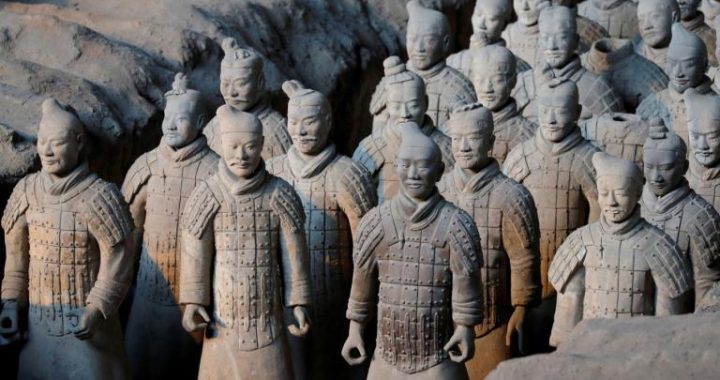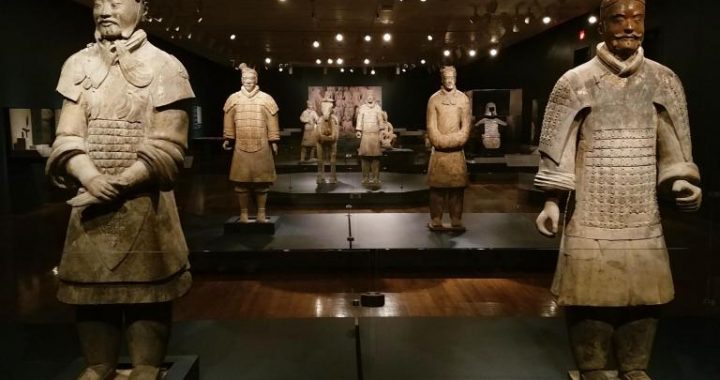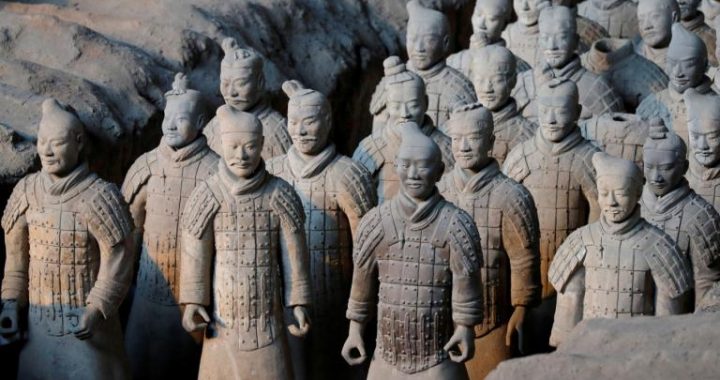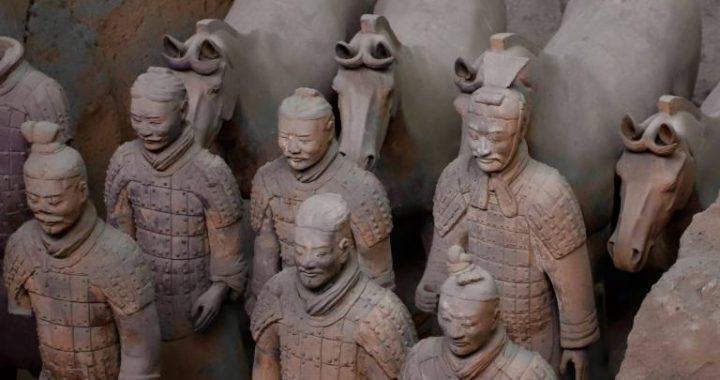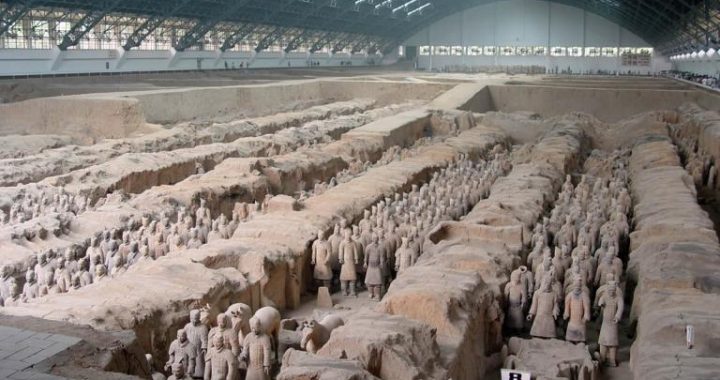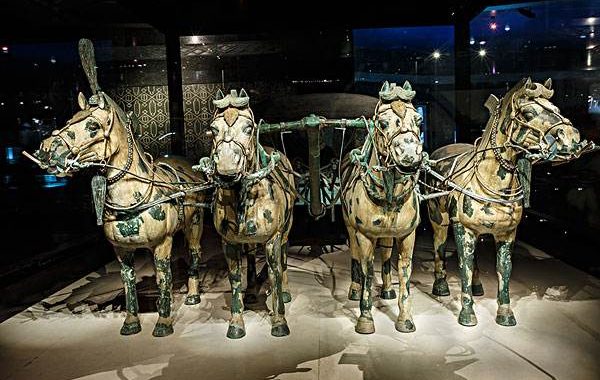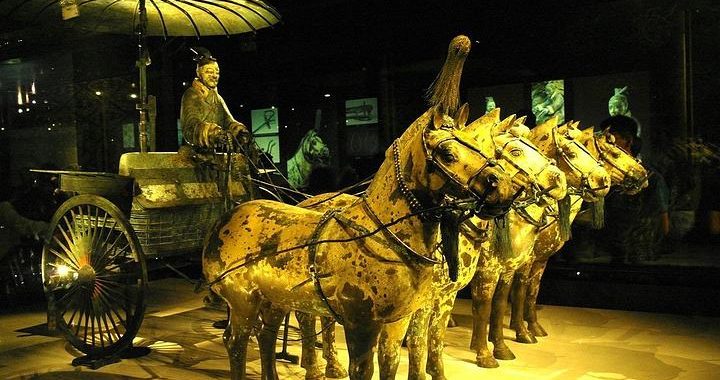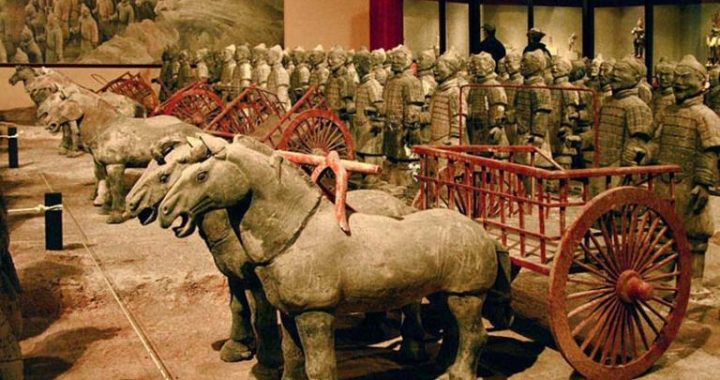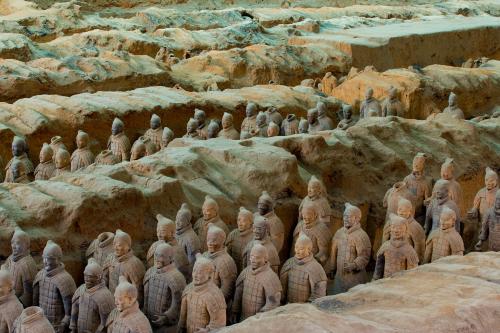Mausoleum of Emperor Qin Shihuang and Terra-cotta Warriors
2 min readEmperor Qin’s mausoleum is the largest of ancient China,situated at the northern foot of Mt Li,Lintong County,some 30m east of Xi’an city,fa-cing Weishui River in the north,close to the tourist resort Huaqing Pool in the west.

The huge and amazing satellite pit of terra-cofta warriors is 1 500m east of the mausoleum,discovered in March of 1974,by a group of farmers driling a well against the draught.Archaeologist the unearthed the treasure of Qin dynasty hidden for over 2 000 years.
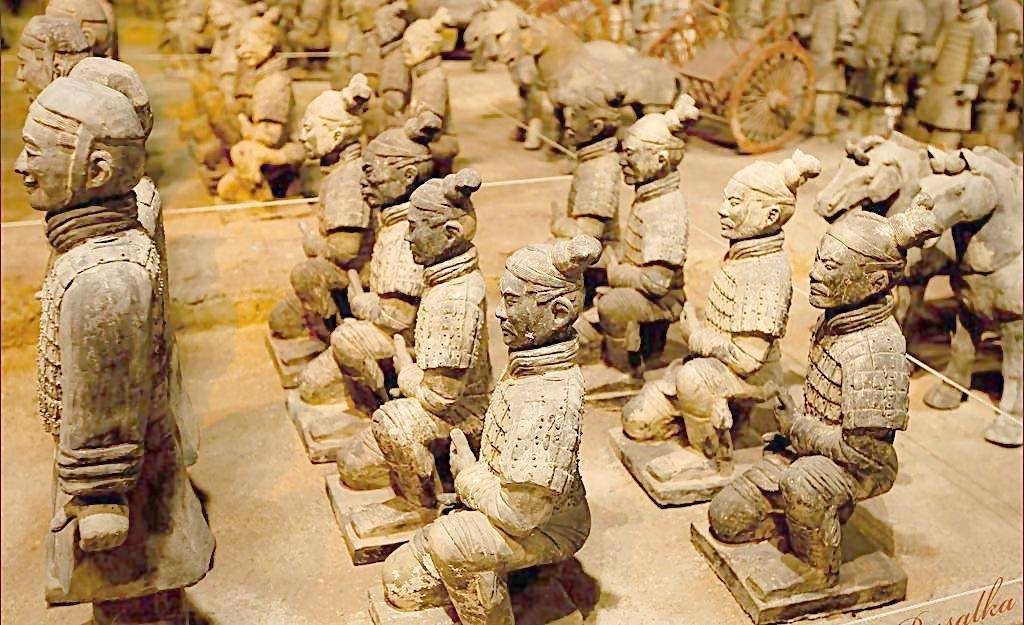
The pit is truly an underground military museum largest worldwide.Its design is rational and unique with a weight wall every 3m,dividing the 5m deep pit into lanes of warriors neatly arrayed.
The satellite pits are 1 500m to the east wall of the mausoleum,right at the north side of the main road to the east gate.The pottery warriors wereimitations of military arrays,the imperial guards of the underground royal city.Judging from the pit designs and warrior equipment,Pit is that of the main force of infantry and chariots,Pit the compound of infantry,cavalry,and chariots,and Pit the headquarters of them all.
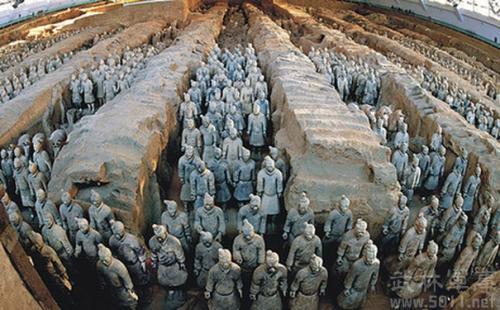
The life-sized pottery army,thousands in number,was deployed in practical battlement formation,hidden 5 to 7 meters underground in the three pits of varied sized and shapes.
Is discovery is a maior achievement of the world’s archaeology.
Praised as world’s 8th Wonder,it well matches the pyramids in Egypt and the Greek sculptures as the precious wealth of human culture.
Due to its hugeness and the lack of writen data,Chinese archaeolo-gists and historians have worked on the mausoleum for decades.Full scale excavation is left to the future,except some scientific unearthing of a few satellite pits,and visitors to the tomb see only a hill like mound,under with lies the emperor in his meticulous underground palace free of disturbance for over 2000 years.
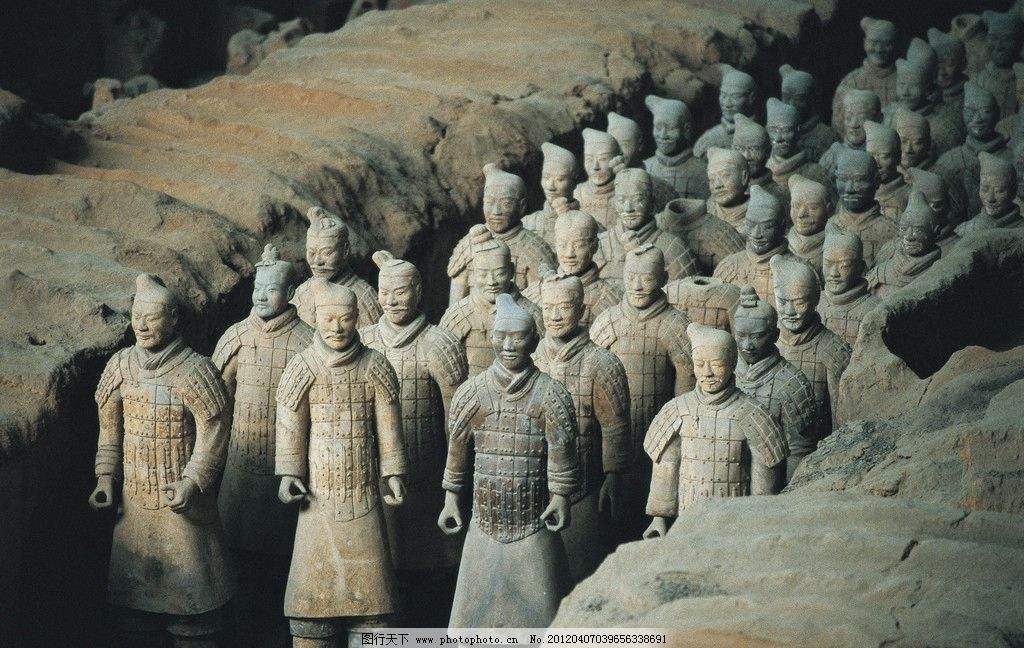
In 1961,the State Council recognized it as a historical site under state protection,and in 1987 UNESCO inscribed the mausoleum and its warrior pit in“World Heritage List”.
